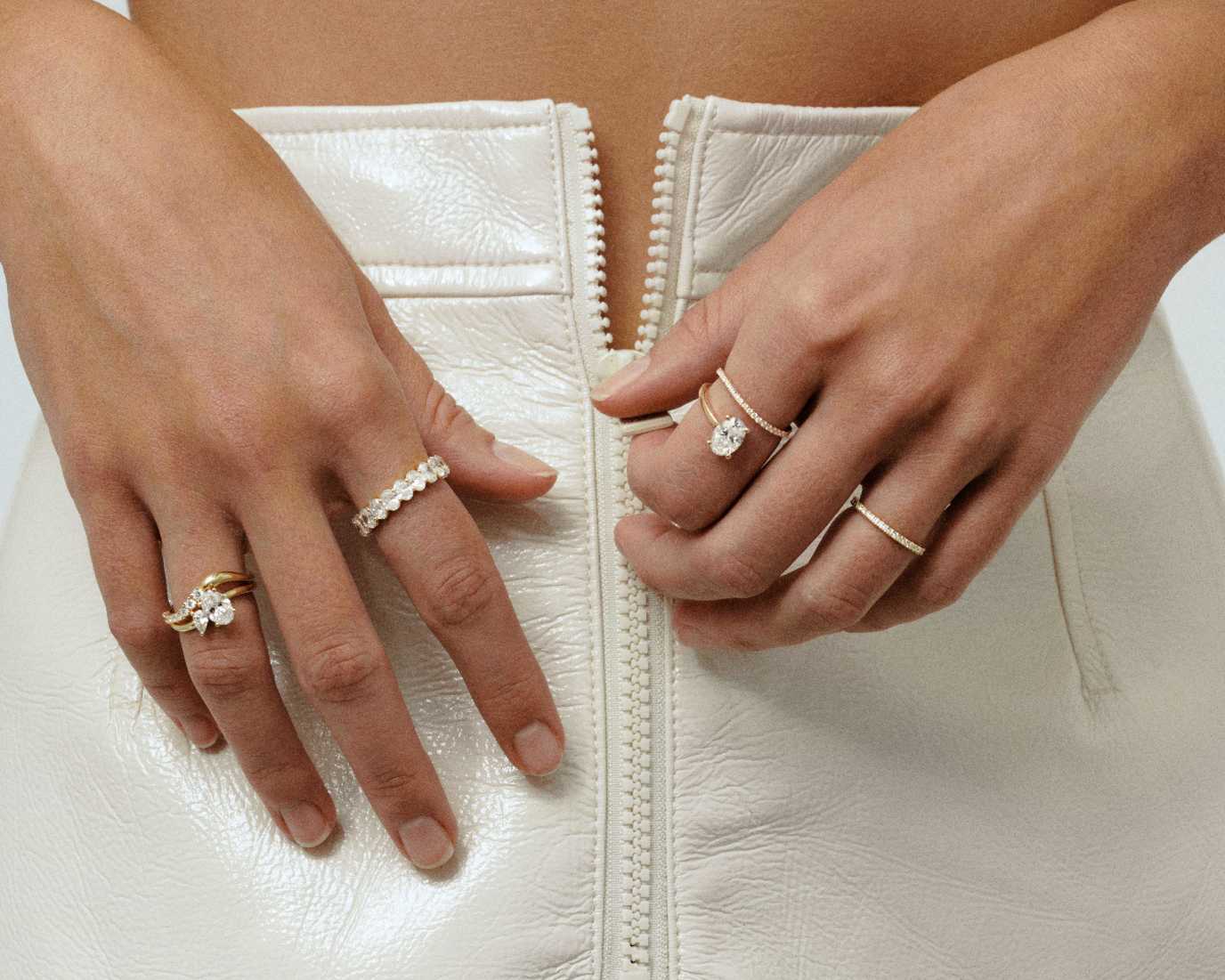Toute notre collection
Tous les bijouxNos BestsellersPièces Personnaliséescarte cadeau digitaleAlliances Bague JackiePar Catégorie
Boucles d’oreillesColliersBraceletsBaguesEar cuffsBracelets pour HommesBagues de FiançaillesAlliancesEducate
11 August 2020Beauty Shouldn’t Cost the Earth
We demystify the uncertainty around lab grown diamonds and the explain the process behind their creation.


What are lab grown diamonds?
When it comes to creating diamonds in a lab, you tend to think they can’t be real. That’s the myth. The truth is that a lab grown diamond is physically and aesthetically identical to a mined diamond. Where mined diamonds were formed over three billion years ago in the earth’s crust, under intense conditions of heat and pressure which cause carbon to crystallise, these exact conditions can be replicated and controlled by a human. The difference is? There is no difference. Even a gemologist with a 10x loupe can’t tell them apart.

How are lab grown diamonds made?
As with most new technology, comes controversy. Lab grown diamonds are in fact debunking the secrecy of the jewelry industry. They are created by using cutting-edge technology that replicates the natural diamond growing process. By doing this, diamonds are formed identical to the traditional mined diamonds, but without the social and environmental impacts.
So, here’s the technical part.
Using two technologies, diamonds can be created in the lab. The first is High Pressure/High Temperature (HPHT), where a diamond seed is placed in a sealed chamber and heated to around 1400 degrees Celsius. The chamber is filled with gases like Methane, which are ionized into plasma. The ionization breaks the molecular bonds in the gases down. This gives way to pure carbon, which adheres to the diamond seed and slowly crystallizes, growing over a number of weeks.
The second method is Chemical Vapor Deposition (CVD). It also replicates the conditions in which mined diamonds are formed. The diamonds are created in a low-pressure atmosphere using hydrogen plasma, which causes the carbon atoms to crystallise into diamond. This process takes an average of 28 days to form a rough diamond, which is then sent to the gemologist to cut. This is then where the 4 Cs come into play.
Why lab grown diamonds?
Visibly, you can’t tell the difference. But, a mined diamond usually changes hands 15 times before it reaches its owner. A lab grown diamond has a clear cut path. From the creator, to the customer - the process allows complete control over the product traceability. Thanks to this shorter supply chain, lab-grown diamonds are priced lower than their mined counterpart, costing 30% to 40% less. Plus, 1750 tons of earth has to be extracted to find a 1.0ct rough diamond. Moreover, blood diamonds, child labour and human rights violations come attached to the murkyness of mined diamonds.

The difference?
Ethically, lab grown diamonds are kinder to the planet and its people. But physically, lab diamonds are physically and aesthetically identical to those that are mined. You couldn’t tell them apart if they were placed side by side.




















